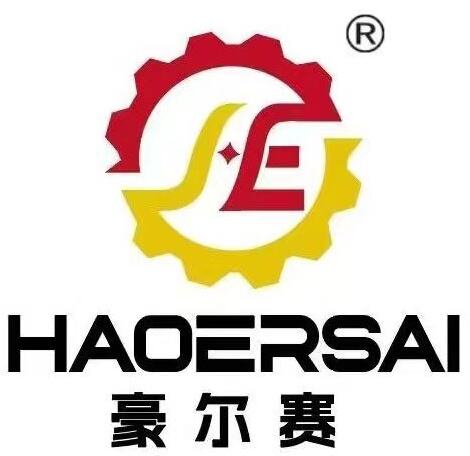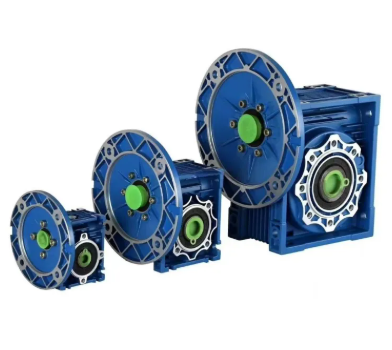Pre-Installation Preparation for Speed Reducers
Ventilation Valve Configuration and Pressure Balance
Getting good ventilation and keeping pressure balanced matters a lot when putting in speed reducers. Without proper airflow, things get too hot around where they're installed, which isn't good for anyone. The heat builds up while these machines run and can really mess with how well they work. When placing those ventilation valves, think about where they'll actually help control what's happening inside the system. Doing this right means the reducer lasts longer and performs better over time. Balanced pressure isn't just nice to have it stops all sorts of problems down the road like parts breaking or systems acting up because pressure gets out of whack somewhere.
Manufacturer Consultation for Installation Guidance
Talking to the manufacturer before installing anything is really important for getting things right from the start. Most manufacturers offer technical support that covers how their particular models should be installed properly. Before starting any work, go through those manuals and guides carefully so nothing gets missed when gathering parts and tools. Getting prepared in advance makes a big difference in whether everything goes smoothly during installation or turns into a frustrating mess later on. Many people skip this part and end up having to call for help because they didn't know about some special requirement for their specific reducer model. When companies take time to consult manufacturers, they usually find that setups work better when adjusted according to what the equipment actually needs versus just following general instructions.
Workspace Cleanliness and Component Readiness
Keeping things neat and tidy around where speed reducers get installed really matters when it comes to avoiding contamination problems. When dirt or bits of stuff end up getting mixed into the installation process, it just ruins everything downstream. Components start wearing out faster than normal or might even fail completely if not cleaned properly first. So cleaning up the work area shouldn't be an afterthought but something front of mind right from day one. Before anyone starts putting pieces together, take time to check every part carefully. Look for scratches, dents, anything that looks off spec. A quick visual inspection goes a long way toward catching issues early on. Getting this right upfront means fewer headaches later down the road when systems actually need to run smoothly without unexpected hiccups messing up productivity.
Critical Installation Steps for Speed Reducers
Component Positioning: Vents, Valves, and Bolts
Getting the vents, valves, and bolts in the right spots matters a lot when putting together speed reducers. When everything lines up correctly, the whole system runs better and we see fewer problems down the road. A good place to start is making sure those vents and valves sit where they should so air can move through properly. Without proper airflow, things tend to get hot real quick which nobody wants. Don't forget about the bolts either. Follow those torque specs exactly as listed in the manual. Skip this part and components might come loose over time, leading to bigger headaches later on. Proper tightening keeps everything intact and working as intended for longer periods between maintenance checks.
Lubricant Volume Adjustment Based on Orientation
Getting the right amount of lubricant for a speed reducer depends on where it sits in relation to gravity, something that makes all the difference in avoiding breakdowns and getting years out of the equipment. When the unit is positioned differently, the way oil moves around inside changes completely. If we ignore this fact, components start wearing down faster than they should. Always check what the factory says about lubricants in their manuals. Following these recommendations isn't just good practice it actually works wonders for keeping everything running properly while cutting down on unexpected repairs. Most maintenance teams have learned this lesson the hard way after dealing with costly failures from using wrong amounts or types of oil.
Shaft Alignment and Coupling Centering
Getting the shaft alignment just right helps stop extra stress on parts, which keeps the speed reducer running smoothly. When alignment goes wrong, it's one of those things that wears out machinery fast and leads to breakdowns down the road. That's why paying close attention during setup matters so much. The couplings need proper centering too if we want to prevent unnecessary wear after installation. Good alignment work makes all the difference for long term performance. Systems run better when everything lines up correctly, putting less pressure on individual components and extending how long the whole unit lasts before needing repairs.
Lubrication Management for Optimal Performance
Splash Lubrication Techniques Under Thermal Loads
Splash lubrication is really important for keeping speed reducers running smoothly, especially when they get hot from heavy workloads. When done right, this method spreads oil evenly across all moving parts, stopping them from getting too hot and cutting down on wear and tear between components. Regular checks of operating temperatures help determine if adjustments need to be made to how much lubricant gets applied where. Taking this kind of hands-on maintenance approach extends equipment life considerably while making sure machines stay efficient even when faced with different kinds of stressors in day-to-day operations.
Oil Level Verification During Operation
Checking oil levels regularly while speed reducers are running helps stop components from seizing up. We need these routine inspections to know if there's enough lubricant getting where it needs to go. Most shops set up some kind of monitoring system that works during regular operations so problems can be spotted early before they cause real damage. Keeping oil at the right level protects the machinery itself, sure, but it also means fewer shutdowns when something breaks down because of poor lubrication. Equipment just runs better overall when maintenance folks stay on top of these basics.
Drain Bolt Procedures for Contamination Checks
Getting the hang of proper drain bolt procedures makes all the difference when it comes to spotting contaminants in lubrication systems. Mechanics need to check regularly and take out whatever debris they find before it starts messing with how the reducers work. Keeping track of what gets found during these checks helps figure out better maintenance timing and catch quality problems before they become big headaches. Most shops schedule these contamination checks as part of routine maintenance because clean oil means happier equipment. Clean systems not only keep reducers running smoothly but also stretch out their useful lifespan considerably.
Operational Monitoring and Maintenance Protocols
Vibration Analysis and Temperature Thresholds
Getting into the habit of regular vibration analysis makes a big difference when it comes to spotting weird stuff happening in gear systems. When we catch signs of wear or misalignment early on, we save ourselves from major headaches down the road like expensive repairs or total system failures. Most plant managers I know run these checks at least once a month just to stay ahead of any trouble spots. Temperature monitoring works hand in hand with this too. Setting those temperature thresholds isn't just paperwork; it keeps everything running safely without going overboard. Nobody wants their gearbox turning into an oven since hot temps will destroy the lubricants and eventually kill off parts entirely. The whole point of all these regular inspections and predictive maintenance routines? Extend how long machines last while keeping them performing at their best throughout their service life.
Leak Detection and Lubricant Quality Assessment
Putting good leak detection systems in place helps stop lubricant from getting lost and keeps everything running properly. Small leaks might seem harmless at first but they can actually cause big problems down the road if ignored for too long. These little drips eat away at efficiency and shorten how long equipment lasts before needing replacement. That's why most maintenance teams schedule regular checkups and install some sort of continuous monitoring setup. Checking the condition of lubricants on a regular basis matters just as much though. Components need proper protection against corrosion and friction damage after all. Stick with quality lubricants from reputable brands and don't skip those periodic tests either. Good oil analysis catches issues early while expensive repairs remain avoidable. The right combination of monitoring and maintenance practices ultimately protects the reducer from premature failure and maintains its performance over time.
Post-Shutdown Gear Meshing and Bearing Inspections
After shutting down machinery, checking gears and bearings thoroughly should be part of standard maintenance work. The point here is to look at how much wear there actually is on those important parts so everything works properly when we bring the equipment back online. Keeping records of what we find during these checks helps track how components are holding up over time, which makes it easier to spot problems early on. When we act on what we discover through these inspections, we get better performance out of our systems and generally make them last longer too. This kind of proactive approach really matters for safety and reliability, cutting down on those frustrating surprise failures that happen right after restarting operations.
Workshop Compliance and Installation Validation
Color-Coded Bolt System for Oil Level Identification
A color coded bolt system helps workers spot oil levels at a glance, making maintenance much easier for everyone involved. When red bolts mean low oil and green means full, mechanics don't need to guess anymore about what's going on inside those speed reducers. Most shops report saving about 30 minutes per day just by having these visual indicators instead of checking dipsticks all the time. Of course, nobody gets much out of this system unless everyone knows what each color actually stands for. Training sessions should cover not just the basics but also common mistakes people make when first learning the system. Some teams even create simple posters showing examples of properly colored bolts next to empty ones so there's no confusion during busy shifts.
Staff Training on Speed Reducer Maintenance
Getting staff properly trained on how to install and maintain speed reducers makes all the difference when it comes to meeting compliance requirements and getting these devices to work at their best. Good training programs need to cover everything from basic maintenance routines right through to troubleshooting common issues, focusing on real world application rather than just theory. Manufacturers often provide helpful materials that can be incorporated into training sessions, while hands on workshops where workers actually get to practice what they learn tend to stick better in memory. When employees have solid technical skills, they're able to follow industry standards much more consistently. This leads to smoother day to day operations and fewer breakdowns down the line, which saves money in the long run for companies relying on these mechanical components.
Documentation of Installation Deviations
Keeping track of when things don't go according to plan during installations creates a valuable record that helps during audits and serves as a reference point later on. When installers note down these differences, they give themselves something tangible to look back on if problems arise down the road. Companies should make sure their documentation practices stay current too. Updating how records are kept isn't just about following rules it actually protects against headaches caused by faulty equipment setups. The best shops we've worked with treat this stuff seriously because nobody wants to spend extra time fixing avoidable mistakes after the fact.
FAQ
What is the importance of ventilation in speed reducer installation?
Proper ventilation is essential to prevent overheating during operation, which can adversely affect performance and longevity. It helps in maintaining balanced pressure, reducing the risk of equipment damage due to pressure fluctuations.
Why should I consult the manufacturer before installation?
Consulting the manufacturer ensures you follow specific installation practices tailored to the model, offering technical support for a successful setup.
How does shaft alignment affect speed reducer functionality?
Correct shaft alignment prevents undue stress on components, reducing the risk of mechanical wear and failure, thus ensuring smooth operation and enhancing system durability.

